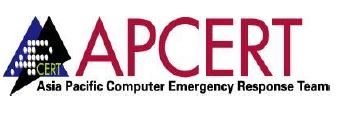Description: Windows 8 and later fail to properly randomize every application if system-wide mandatory ASLR is enabled via EMET or Windows Defender Exploit Guard. Microsoft Windows 8 introduced a change in how system-wide mandatory ASLR is implemented. This change requires system-wide bottom-up ASLR to be enabled for mandatory ASLR to receive entropy. Tools that enable system-wide ASLR without also setting bottom-up ASLR will fail to...
Read More
Description: Microsoft has released updates to address vulnerabilities in Microsoft software. The November security release consists of security updates for the following software: Internet Explorer Microsoft Edge Microsoft Windows Microsoft Office and Microsoft Office Services and Web Apps ASP.NET Core and .NET Core Chakra Core Impact: A remote attacker could exploit some of these vulnerabilities to take control of an affected system. Mitigation: Updates are available. Please...
Read More
Description: Joomla! has released version 3.8.2 of its Content Management System (CMS) software to address multiple vulnerabilities. Impact: A remote attacker could exploit one of these vulnerabilities to obtain sensitive information. Mitigation: Updates are available. Please see the references or vendor advisory for more information. Reference URL’s: https://www.joomla.org/announcements/release-news/5716-joomla-3-8-2-release.html
Description: WordPress 4.8.3 is now available. This is a security release for all previous versions and it is strongly encouraged you to update your sites immediately. WordPress versions 4.8.2 and earlier are affected by an issue where $wpdb->prepare() can create unexpected and unsafe queries leading to potential SQL injection (SQLi). WordPress core is not directly vulnerable to this issue, but we’ve added hardening to prevent plugins and themes from...
Read More
Description: The error page mechanism of the Java Servlet Specification requires that, when an error occurs and an error page is configured for the error that occurred, the original request and response are forwarded to the error page. This means that the request is presented to the error page with the original HTTP method. If the error page is a static file, expected behaviour is...
Read More









